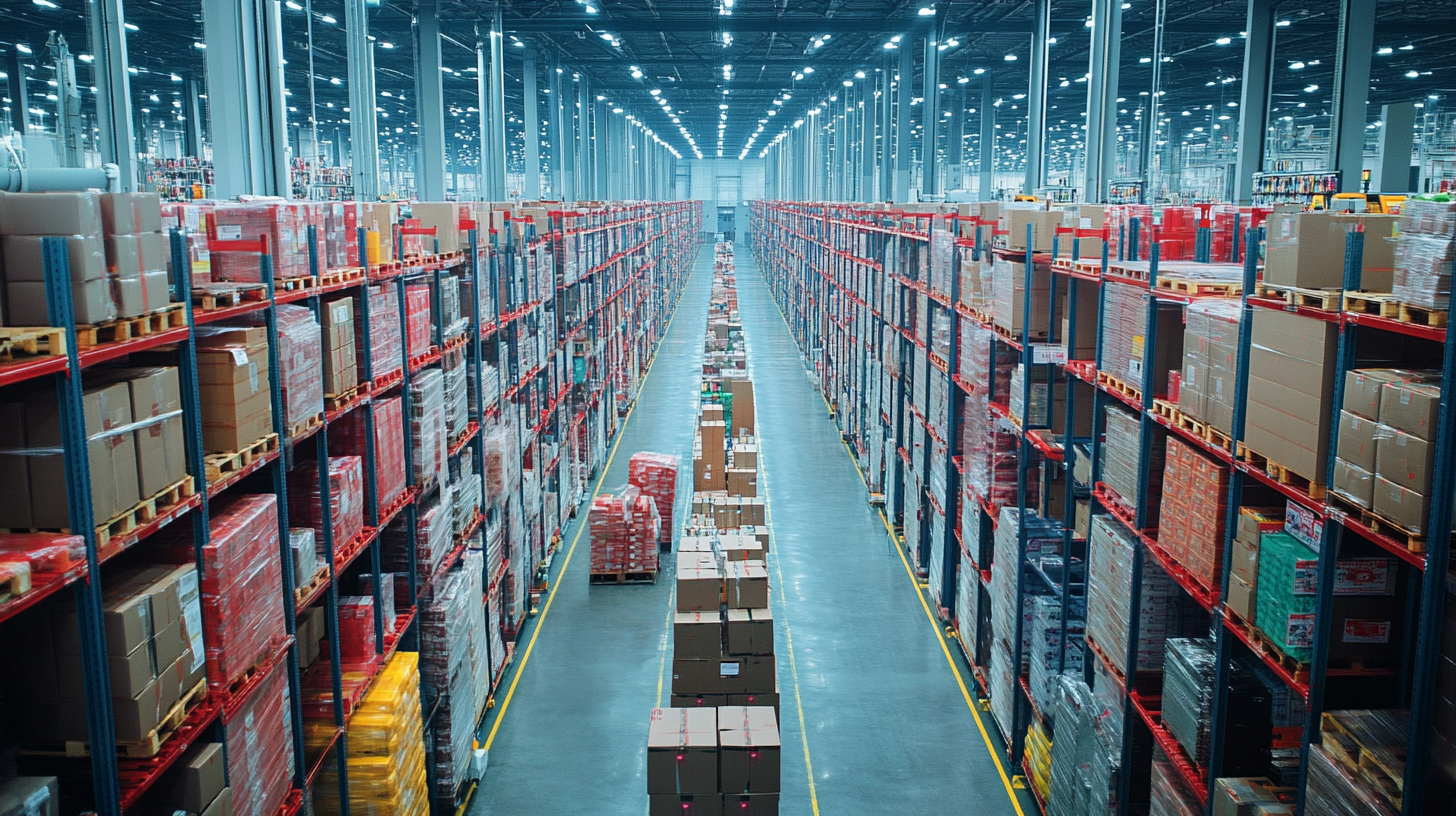

14, Raghava Enclave, Transport Road, Secunderabad, Hyderabad (500009)
©2024 All Rights Reserved by excitechrobot.com
In an increasingly competitive landscape, supply chain optimization has become a critical focus for businesses aiming to improve efficiency and reduce costs. According to a report by McKinsey & Company, companies that leverage automation within their supply chains can achieve up to a 25% increase in productivity. This is where Rapid Robotics comes into play—offering advanced solutions that enable organizations to respond swiftly to market demands and streamline operations. As businesses look for ways to enhance their responsiveness and adaptability, integrating Rapid Robotics not only smoothens workflows but also significantly mitigates the risk of human error.
Recent studies, including those from Deloitte, indicate that supply chains utilizing robotic solutions see a remarkable decrease in labor costs by up to 40%. With rapid advancements in robotic technology, companies are discovering the potential of Rapid Robotics to enhance their logistics and manufacturing processes. By adopting these innovative solutions, organizations can not only accelerate their operational capabilities but also gain a strategic edge, positioning themselves to meet consumer expectations for fast and reliable service. As we delve deeper into the benefits of Rapid Robotics, it becomes clear that embracing these technologies is not just a trend, but a necessity for forward-thinking supply chains.

The evolution of robotics in supply chain management has been a game-changer for industries worldwide. Initially, robotics began as simple machines destined for repetitive tasks in manufacturing environments. Over the years, advancements in artificial intelligence, machine learning, and sensor technology have transformed these machines into sophisticated systems capable of performing complex operations across the supply chain.
Modern robotics now play a pivotal role in logistics, where automated storage and retrieval systems streamline warehousing processes. These robots can quickly and accurately pick, pack, and transport goods, significantly reducing the time needed to fulfill orders. Furthermore, alongside the rise of e-commerce, robotics has evolved to handle increased volumes and demands, enabling businesses to maintain high levels of efficiency and customer satisfaction.
Additionally, the integration of collaborative robots, or cobots, into supply chains highlights a significant shift in operational dynamics. Unlike their predecessors, cobots work alongside human workers, enhancing productivity and minimizing errors. This harmonious interaction not only optimizes workflow but also enables businesses to adapt to the rapid changes in consumer behavior and supply chain disruptions, fostering resilience and agility in an ever-evolving marketplace.

The integration of rapid robotics within supply chains is revolutionizing the way businesses operate. One of the key benefits of implementing these solutions is the significant enhancement in operational efficiency. Rapid robotics systems are designed to perform repetitive tasks with speed and precision, reducing the time required for processes such as picking, packing, and sorting. This acceleration not only boosts productivity but also allows human workers to focus on more complex tasks, thereby optimizing workforce utilization and minimizing errors.
Another major advantage is the flexibility that rapid robotics bring to supply chains. These systems can be easily reprogrammed or adjusted for various tasks, making them adaptable to fluctuating demands. In a landscape where consumer preferences are constantly changing, having a flexible automation solution ensures that businesses can quickly pivot to meet new requirements without the need for extensive downtime or retraining. This agility is crucial in maintaining a competitive edge.
Additionally, cost savings are a compelling reason to adopt rapid robotics. While the initial investment may seem substantial, the long-term financial benefits can be significant. With faster throughput and reduced labor costs, businesses can achieve a quicker return on investment. Furthermore, the reduction in errors and improved accuracy can lead to less waste and lower operational overhead, allowing companies to allocate resources more effectively across their supply chains. Implementing rapid robotics is not just an operational upgrade; it's a strategic move that can drive growth and enhance overall business resilience.
In today's competitive landscape, businesses are increasingly turning to rapid robotics to enhance their supply chains, realizing significant cost efficiency and productivity gains through automation. According to a report by McKinsey & Company, companies that adopt automation can see productivity increases of 20 to 25 percent by streamlining operations and reducing manual errors. This shift not only optimizes performance but also reallocates human resources toward higher-value tasks, ultimately fostering innovation.
Furthermore, a study by the Boston Consulting Group indicates that incorporating automation in warehouses can lead to cost savings of up to 20%. Automation technology, such as automated guided vehicles (AGVs) and robotic arms, minimizes labor costs while increasing throughput. For instance, robotic picking systems have demonstrated the ability to handle up to 300 items per hour, compared to 60 items manually, showcasing how rapid robotics can transform labor-intensive processes into efficient workflows.
Additionally, the implementation of rapid robotics enhances accuracy within the supply chain. According to the Warehousing Education and Research Council, the accuracy of order fulfillment can improve to over 99% when using robotic systems. This level of precision significantly reduces the costs associated with returns and restocking, allowing businesses to maintain higher customer satisfaction levels and loyalty. As companies continue to leverage these technologies, the potential for enhanced cost efficiency and productivity seems boundless.
The integration of rapid robotics within supply chains is rapidly reshaping industries, particularly as we transition into Industry 5.0. This new era emphasizes collaboration between humans and robots, known as "cobotics," where robotics systems are designed to work alongside human workers, enhancing efficiency and productivity. According to a recent report, the market for collaborative robots is expected to reach $12 billion by 2025, highlighting the rapid adoption of these technologies in various sectors.
Real-world case studies illustrate the tangible benefits of robotics integration. For instance, companies have reported reducing operational costs by up to 30% after implementing robotic solutions for tasks such as machine tending and assembly line operations. A notable example is an automated CNC machine tending system that allows manufacturers to maintain continuous production while minimizing human error. This integration not only increases throughput but also frees human workers for higher-level tasks, fostering skill enhancement in the workforce.
Moreover, the evolving landscape of AI in the workplace is transforming how industries approach their operations. Recent reports reveal that organizations utilizing AI-driven automation have seen up to a 40% improvement in process efficiency. This intersection of AI and robotics within supply chains not only streamlines operations but also enables companies to rapidly adapt to market changes, thus sustaining competitive advantages in an increasingly dynamic environment. As businesses continue to embrace robotics, the future holds promising prospects for enhanced collaboration and innovation in manufacturing and beyond.
The integration of rapid robotics into supply chains is increasingly recognized as a game-changer, setting the stage for unprecedented efficiencies and innovations. As we look towards future trends in robotics, particularly in the context of the recent seminar hosted by Xianji Semiconductor and Haoshanghao Information in Shanghai, we can see a clear vision emerging. The discussions held during this event emphasize the importance of aligning robotics with cutting-edge technologies and industry needs, paving the way for smarter supply chain solutions.
In 2024, the technology sector is expected to experience significant transformations driven by advancements in AI and robotics, emphasizing the necessity for businesses to adapt. As highlighted by industry leaders, the competitive landscape will require companies to harness these technologies effectively to optimize operations. The exploration of robotics as a pivotal component of supply chain dynamics not only enhances productivity but also provides opportunities for strategic growth in a rapidly evolving market. Such discussions are critical as they inspire companies to rethink their operational frameworks and invest in robotic innovations that will define the logistics of the future.
Moreover, the notion of a "smart supply chain," which integrates AI-driven insights with rapid robotics, represents a new frontier for businesses. Companies that can capitalize on this synergy will likely benefit from increased agility in operations, reduced costs, and improved service offerings. As trends point towards further integration of robotics into various sectors, those who lead this charge will position themselves for long-term success amidst the challenges of an increasingly competitive global economy.

